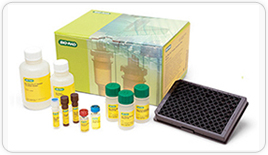Can’t Publish!
:: Posted by American Biotechnologist on 12-22-2014Hormonal Changes In Expectant Fathers
:: Posted by American Biotechnologist on 12-18-2014Impending fatherhood can lower two hormones-testosterone and estradiol-for men, even before their babies are born, a new University of Michigan study found.
Other studies indicate that men’s hormones change once they become fathers, and there is some evidence that this is a function of a decline after the child’s birth. The new U-M study is the first to show that the decline may begin even earlier, during the transition to fatherhood, said Robin Edelstein, the study’s lead author.
“We don’t yet know exactly why men’s hormones are changing,” said Edelstein, U-M associate professor of psychology. “These changes could be a function of psychological changes that men experience as they prepare to become fathers, changes in their romantic relationships, or even physical changes that men experience along with their pregnant partners.
“Nevertheless, fathers’ hormonal changes could have important implications for paternal behavior once their babies are born.”
Expectant mothers experience significant hormone changes throughout the transition to parenthood, but less has been known about the prenatal hormone changes among soon-to-be fathers.
Edelstein and colleagues examined salivary testosterone, cortisol, estradiol and progesterone in 29 first-time expectant couples between the ages of 18 and 45. The saliva samples were obtained up to four times during the prenatal period at about 12, 20, 28 and 36 weeks of pregnancy.
Women showed large prenatal increases in all four hormones, while men saw declines in testosterone (which is associated with aggression and parental care) and estradiol (which is associated with caregiving and bonding). No changes were found in men’s cortisol (a stress hormone) or progesterone (which is associated with social closeness and maternal behavior).
So it’s not just about the presence of an infant that lowers testosterone, Edelstein said.
One limitation of the new study-as it relates to lower testosterone-is that researchers do not have a comparison group of men who are not expecting a child.
“Thus, we can’t completely rule out the possibility that the changes are simply due to age or the passage of time,” Edelstein said.
Thanks to the University of Michigan for contributing this story.
2015 NIH Budget Falls Short of Expectations
:: Posted by American Biotechnologist on 12-17-2014In 2013 the buzzword for the state of affairs for scientific funding in the US was sequestration. That year saw huge hits to American government funding of the NIH and other scientific endeavors that severely hampered research activities throughout the country. In 2014, there was a slight increase in life science funding, however, it was not enough to put American research back on track to where the NIH hoped it would be. While scientists remain hopeful that 2015 will be the year of recovery, a bill released last week by the Senate Spending Subcommittee seems to suggest otherwise.
While organizations such as NASA and the National Science Foundation will be receiving increases of $364 million and $172 million respectively, the NIH will be receiving an increase of $150 million which falls quite a bit short of what is needed to fund America’s largest health sciences granting agency. To further add insult to injury, the 0.5% increase still leaves the agency with less funding than it had prior to the 2013 sequestration.
The few research areas that will benefit from the 2015 budget include $1.2 Billion for the National Institute of Aging and $238 Million for Ebola research.
Some other notable areas of funding include:
- $787 Million for AIDS prevention and research
- $352 Million for Cancer prevention and control
- $140 Million for diabetes
- $130 Million for heart and stroke
- $47 Million for Autism research
- $13.8 Million for Heritable disease research
- $3.3 Million for Alzheimer’s research
Up All Night To Get Published!
:: Posted by American Biotechnologist on 12-16-2014Superior Profiling of Cancer, Cardiovascular, and Other Disease Biomarkers
:: Posted by American Biotechnologist on 12-15-2014
Bio-Plex Pro Human Inflammation Panels allow simultaneous quantification of 37 key biomarkers of inflammation.
Inflammation contributes to seven of the top ten causes of mortality, including heart disease, cancer, and diabetes. This underscores the critical need to identify and monitor underlying inflammation biomarkers — biochemical signs of inflammation — to aid in disease research and drug discovery and development. Other companies have developed products to quantify inflammation biomarkers, but have thus far not been able to deliver a multiplex solution that allows analysis of key inflammation biomarkers in a single assay.
The Bio-Plex Pro Human Inflammation Panel is the first multiplex immunoassay to enable detection of key inflammation biomarkers from the tumor necrosis factor (TNF), human interferon (IFN), matrix metalloproteinases (MMP), and IL-10/regulatory T cell (Treg) cytokine families in one assay. Using this panel, researchers can now study 37 key biomarkers of inflammation simultaneously in a single assay, allowing them to save precious time, money, and sample.
Benefits of Bio-Plex Pro Human Inflammation Panels include:
- Flexible ordering options — the panels are available as premixed and ready-to-use large screening kits (37-plex or 24-plex), a pathway-focused Treg 12-plex kit, singleplex assays, or any custom kits
- Rapid results — multiplex data are generated in 3–4 hours through the use of magnetic beads and protocols that deliver rapid turnaround time
- Easy preparation — Bio-Plex Pro Kits require only a single sample dilution factor and single-level control, simplifying setup
Bio-Plex Pro Human Inflammation Panels are compatible with the Bio-Plex® 100/200,
Bio-Plex® 3D, and Bio-Plex® MAGPIX™ Platforms, as well as all other Luminex-based xMAP Instruments and Software.
For more information about Bio-Rad’s Bio-Plex product portfolio, please visit www.bio‑rad.com/bioplexpr.
















